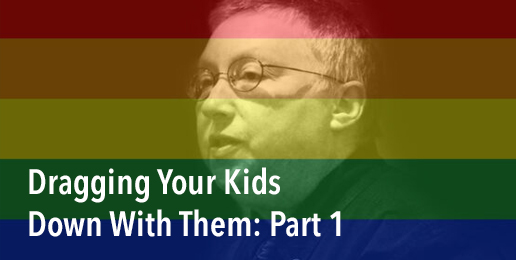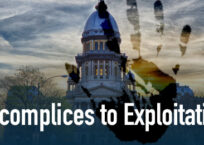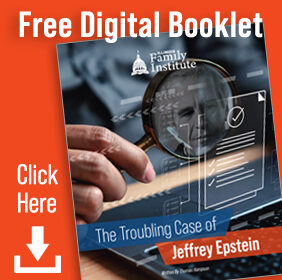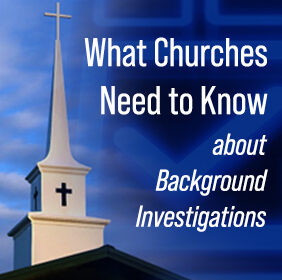
In late June of last year, a cultural battle erupted in the small, northern-Illinois town of Rockton.
With police supervising the scene, hundreds of people swarmed to the town’s community center where the library board was deliberating inside. Some protesters held signs with slogans such as “Keep Your Hands off Our Children” and sang “God Bless America.”
Other protesters wore bright rainbow-colored clothing and chanted, “Love thy queer neighbor!”
What was the question at hand? Whether the library would host a drag queen Q & A session originally slotted as part of the library teen summer program.
After hours of protesting and counterprotesting, the crowd heard the news: The library board had just voted 4-2 to allow the Q & A. The pro-queer demonstrators cheered, and the conservative demonstrators resolved to return and protest at the event. A town of less than 8,000 people had just stooped a little lower to the idol of perversion.
While it may be somewhat surprising to hear of this happening in a small town as opposed to a large teeming city, Rockton’s story is just one example of a far-reaching cultural battle over sexuality and the minds of children that seems to be permeating America everywhere.
Men dressed in women’s clothing are increasingly creeping into schools and libraries to explore their sexual themes before an audience of the young and vulnerable.
At first glance, our inner moral sense rightly revolts at the idea. There’s something deeply twisted with the picture of a freakishly dressed storyteller wearing hideous makeup and reading Bye, Bye, Binary to a classroom of wide-eyed 3rd-graders.
Our first reaction will likely be something like, “That’s just wrong! Keep him and that sexual material away from the kids!” And this reaction is 100% correct. But we as conservative Christians shouldn’t just know how to identify the enemy actions; it’s also important to understand the enemy’s tactics.
Once we understand the grand drag queen strategy, our response will hopefully be much more thoughtful, precise, and effective.
To understand why something as wickedly odd as drag queen story hour is being swiftly pushed across America, let’s take a huge step back. What is the worldview in which these bizarrely inappropriate performances can even make sense? (As I answer this, I am indebted to a very informative article published in City Journal on the ideology of drag. Note: The article does contain some explicit descriptions of the subject.)
This worldview is based on “queer theory,” an academic discipline committed to deconstructing traditional sexual ethics, the origins of which are traced back to this specific article published in 1984 by activist Gayle S. Rubin.
In her article, Rubin organized different kinds of sexual activity into a hierarchy according to society’s perception of them (p. 151). At the top of the pyramid—enjoying the most societal respect—are married man-woman pairs. Underneath them would be unmarried man-woman pairs. Then, lower down, we find long-term gay or lesbian relationships.
Finally, at the lower end of the pyramid, are the “most despised” types—transsexuals, sadomasochists, porn models, prostitutes, etc.
Ultimately, the incestuous are the lowest of the low.
This hierarchy matters to Rubin because she notices that when individuals engage in the sexual activity higher on the pyramid, society views them as more respectable and they are rewarded with benefits such as “social mobility,” “institutional support,” and “material benefits.” However, those who perform acts lower down on the pyramid are more likely to be presumed mentally ill, charged with criminal behavior, and overall deemed disreputable.
Rubin especially blames “Western religious traditions”—i.e., Christianity—for contributing to the societal perceptions of sexual activity that would place them at their respective levels in the pyramid.
Well, Rubin is right about one thing—the Bible does indeed evaluate various kinds of sexual behavior (1 Corinthians 6:9, Colossians 3:5, 1 Timothy 1:10). But unlike Rubin, the Bible doesn’t organize them into a hierarchy.
The Bible organizes them into two camps: the righteous and the unrighteous.
The Bible places Rubin’s highest hierarchical rung—monogamous heterosexual marriage—squarely in the “righteous” camp. One of the first things we are ever told about man is that he will leave his parents and be made one flesh with his wife (Genesis 2:24), and Christ tells us that this is the work of God Himself (Matthew 9:6).
With that established, the Bible places every other kind of sexual activity in the “unrighteous” camp. Fornication is sin (Ephesians 5:3). Homosexuality is sin (1 Corinthians 6:9). Prostitution is sin (1 Corinthians 6:15). Incest is sin (Leviticus 18:6). And so on and so on.
Already, then, we see two stark differences between queer theory and the truth.
First, according to the Bible, there is a clear divide between these two camps. There is no hierarchy, no slide scale, no gray area from one kind of sexual behavior to the next.
Second, the biblical perspective organizes sexual behavior according to righteousness, not according to societal perceptions. Regardless of what anyone else thinks, sexual activity can only be called righteous if it is contained within God’s immutable design of marriage.
These two stark differences betray two stark lies that Rubin’s theory promotes.
First, the hierarchy grants legitimacy to all kinds of sexual behavior that are placed on it. (Imagine if I came up with an “occupation pyramid” for you: first “white-collar jobs,” then “blue-collar jobs,” then “violent criminal jobs.”) Since all these kinds of behavior are placed on the same pyramid, they seem more like an innocent smorgasbord of similarly legitimate options rather than a list of actions that are either right or wrong.
Second, the organizing principle is entirely incorrect. Rubin wants the organizing principle in our minds to be “societal acceptance.” There isn’t really a “right” or a “wrong;” there is just “whatever society values” and “whatever society condemns.” Thus, when we think of the kinds of sexual activity that are lower down the hierarchy, our gaze is subconsciously focused on the evil, oppressive society doing the “condemning” rather than the perverts committing the perversion.
Rubin’s pyramid entirely lacks the categories of “righteousness” and “unrighteousness” and instead presents us with an elaborate distraction mechanism. Essentially, Christians are told to not focus on the people who do evil things; but rather on the people who call those things evil.
Ultimately, then, queer theory takes sinful sexual behavior and repackages it as “societally unacceptable behavior.” This prompts us to believe that perversions are only lower in the hierarchy because they’re unconventional.
Those who do it aren’t sinning; they’re just oppressed.
Sex is no longer an immutable fact of biology and human nature; it is a malleable social and historical construct.
And thus, if we want to liberate those who are oppressed because they’re performing sexual acts on the “fringe” of society, we should just change the social perception of those “fringe” acts.
And I bet you can see where I’m going with this…
Enter drag performances.
(Stay tuned for part 2.)























